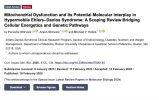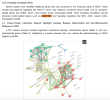mariovitali
Senior Member (Voting Rights)
@forestglip
A Fibromyalgia patient who also had ME symptoms has contacted me after many years. She found she has the ALDH18A1 mutation and she has issues with spastic paraplegia. From what I see this mutation leads to hyperammonemia (which she has). Taking certain aminoacids has changed her life. I instructed her to talk to her doctor for LOLA supplementation. I find the fact that searching for ALDH18A1 led me here quite interesting.
A Fibromyalgia patient who also had ME symptoms has contacted me after many years. She found she has the ALDH18A1 mutation and she has issues with spastic paraplegia. From what I see this mutation leads to hyperammonemia (which she has). Taking certain aminoacids has changed her life. I instructed her to talk to her doctor for LOLA supplementation. I find the fact that searching for ALDH18A1 led me here quite interesting.



